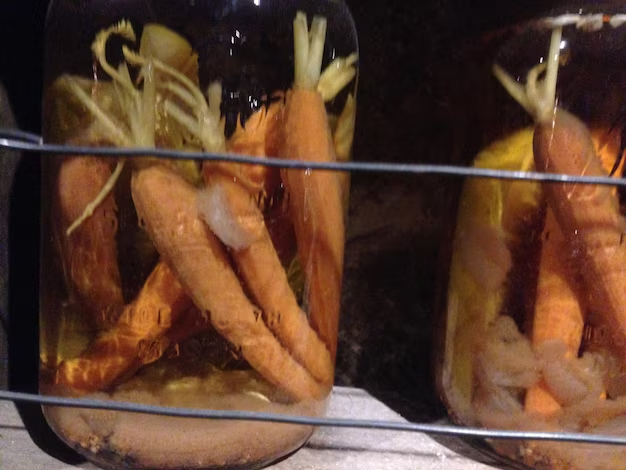How Long Does Shrimp Stay Fresh in Your Refrigerator? Your Essential Guide
Shrimp, prized for its sweet, succulent taste and versatility in cooking, is a staple seafood for many households. Whether you're concocting a flavorful shrimp scampi or adding a protein boost to your salad, knowing how to store shrimp properly is crucial to maintaining its freshness and flavor. The key question for seafood lovers often is: How long can shrimp last in the refrigerator? Let's dive into this topic to ensure your next shrimp dish is as delightful as it can be.
Understanding the Freshness of Shrimp
Fresh shrimp brings the taste of the sea to your plate. However, like all seafood, it is highly perishable. From the moment it is caught, shrimp begins to lose its freshness. Understanding the factors that impact its shelf life ensures your shrimp stays safe to eat.
Factors Affecting Shrimp Shelf Life
- Initial Quality: If you start with fresh, high-quality shrimp, it's likely to last longer.
- Storage Conditions: Keeping shrimp at a consistent, cold temperature is critical.
- Preparation Method: Cooked shrimp has different storage requirements compared to raw shrimp.
- Packaging: Properly sealed containers or vacuum packaging extend shrimp's shelf life.
How Long Can Shrimp Last in the Fridge?
The general recommendation is:
- Raw shrimp: Lasts 1-2 days in the refrigerator.
- Cooked shrimp: Can last 3-4 days in the refrigerator.
Pro Tip: Always check shrimp for signs of spoilage before consumption, regardless of how long it has been stored.
Recognizing Spoilage in Shrimp
Eating spoiled shrimp can lead to foodborne illnesses, so be vigilant for these signs of spoilage:
Smell
Fresh shrimp should have a mild, ocean-like scent. A strong, sour, or ammonia-like smell is an indication that the shrimp is no longer good.
Appearance
- Color: Fresh shrimp should be translucent and have a slightly shiny appearance. If they are discolored, gray, or have any black spots, it's time to discard them.
- Texture: If the shrimp feels slimy or sticky, it has likely gone bad.
Check for Mold
Any sign of mold on shrimp means it should be thrown out immediately. Mold can be white or greenish and may appear on the surface.
How to Store Shrimp Properly
By following proper storage techniques, you can extend the shelf life of your shrimp significantly.
Raw Shrimp Storage Tips
- Keep It Cold: Store raw shrimp in the coldest part of your refrigerator, usually the bottom or the back.
- Sealed Containers: Use an airtight container to minimize exposure to air and moisture.
- Layer on Ice: Placing shrimp on a bed of ice inside the refrigerator can help keep it cold and fresh.
Cooked Shrimp Storage Tips
- Rapid Cooling: Cool the shrimp as quickly as possible and transfer to the fridge within two hours of cooking.
- Separate Storage: Store cooked shrimp separately from other foods to prevent cross-contamination.
- Proper Containers: Use a sealed container or cover with foil or plastic wrap.
Can You Freeze Shrimp for Longer Storage?
Absolutely! Freezing shrimp is an excellent way to extend its life beyond what the refrigerator can offer.
Freezing Raw Shrimp
- Prepare: Peel and devein shrimp before freezing if desired.
- Pack & Seal: Place shrimp in a freezer bag, removing as much air as possible. Vacuum sealing is ideal for preventing freezer burn.
- Label & Date: Always label shrimp packages with the date to track storage time.
Freezing Cooked Shrimp
- Cool Completely: Allow shrimp to reach room temperature before freezing.
- Proper Packaging: Like raw shrimp, store cooked shrimp in airtight containers or thick freezer bags.
Shrimp Freezing Duration: Both raw and cooked shrimp can last for about 3-6 months in the freezer when properly stored.
Thawing Frozen Shrimp
For the best taste and texture, thaw shrimp properly:
- Refrigerator Thawing: Place frozen shrimp in the refrigerator overnight to thaw gradually.
- Cold Water Thawing: Place shrimp in a sealed bag and immerse in cold water for quicker thawing.
Avoid using hot water or microwaving shrimp to thaw, as this can affect texture and flavor.
Ensuring Safety When Using Shrimp
Cooking Shrimp Thoroughly
Shrimp must be cooked to an internal temperature of 145°F (63°C). This ensures that all potential pathogens are killed, making it safe to eat.
Monitoring the "Use By" Date
When purchasing packaged shrimp, adhere to the "use by" or "sell by" dates as an added measure of safety and quality assurance.
Additional Tips for Seafood Enthusiasts
- Avoid Room Temperature: Do not leave shrimp at room temperature for more than two hours.
- Buy in Moderation: Purchase only as much shrimp as you plan to use within its appropriate storage timeframe.
- Inspect Before Buying: Always choose shrimp that has been stored properly in stores—look for clear eyes and firm, translucent bodies.
🌟 Quick Reference Guide to Shrimp Storage
Here's a handy reference table to keep your shrimp safe and tasty:
| Shrimp State | Refrigerator Storage | Freezer Storage | Signs of Spoilage |
|---|---|---|---|
| Raw Shrimp | 1-2 days | 3-6 months | Sour smell, discoloration, slime |
| Cooked Shrimp | 3-4 days | 3-6 months | Strong odor, dampness, mold |
A Balanced Approach to Enjoying Shrimp Responsibly
Incorporating shrimp into your meals offers diverse culinary possibilities and nutritional benefits. By understanding the intricacies of shrimp storage, you ensure not only delicious dishes but also safe consumption. Prioritizing hygiene and mindful preparation plays a vital role in the preservation of shrimp freshness. Remember, knowing when to discard shrimp is just as crucial as knowing how to store it. Take these best practices into account, and enjoy shrimp as a delightful ingredient in your cooking repertoire without worry.
